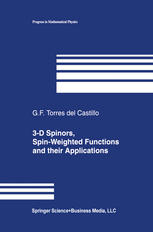

Most ebook files are in PDF format, so you can easily read them using various software such as Foxit Reader or directly on the Google Chrome browser.
Some ebook files are released by publishers in other formats such as .awz, .mobi, .epub, .fb2, etc. You may need to install specific software to read these formats on mobile/PC, such as Calibre.
Please read the tutorial at this link: https://ebookbell.com/faq
We offer FREE conversion to the popular formats you request; however, this may take some time. Therefore, right after payment, please email us, and we will try to provide the service as quickly as possible.
For some exceptional file formats or broken links (if any), please refrain from opening any disputes. Instead, email us first, and we will try to assist within a maximum of 6 hours.
EbookBell Team

4.4
72 reviewsThis systematic and self-contained treatment of the theory of three-dimensional spinors and their applications fills an important gap in the literature. Without using the customary Clifford algebras frequently studied in connection with the representations of orthogonal groups, spinors are developed in this work for three-dimensional spaces in a language analogous to the spinor formalism used in relativistic spacetime.
Unique features of this work:
* Systematic, coherent exposition throughout
* Introductory treatment of spinors, requiring no previous knowledge of spinors or advanced knowledge of Lie groups
* Three chapters devoted to the definition, properties and applications of spin-weighted functions, with all background given.
* Detailed treatment of spin-weighted spherical harmonics, properties and many applications, with examples from electrodynamics, quantum mechanics, and relativity
* Wide range of topics, including the algebraic classification of spinors, conformal rescalings, connections with torsion and Cartan's structural equations in spinor form, spin weight, spin-weighted operators and the geometrical meaning of the Ricci rotation coefficients
* Bibliography and index
This work will serve graduate students and researchers in mathematics and mathematical and theoretical physics; it is suitable as a course or seminar text, as a reference text, and may also be used for self-study.